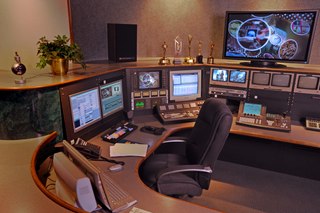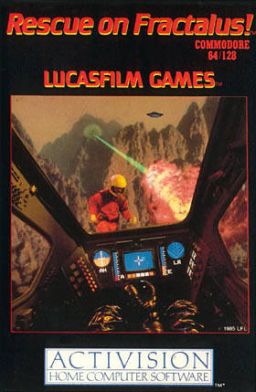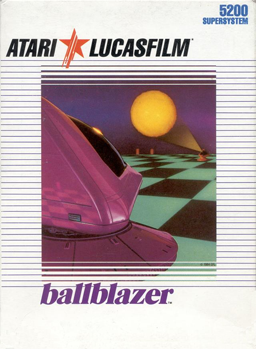Related Research Articles

The X-wing starfighter is a name applied to a family of fictional spacecraft manufactured by the Incom Corporation from the Star Wars franchise. Named for the distinctive shape made when its s-foils (wings) are in attack position, the X-wing was a class of starfighter used by the Rebel Alliance in their conflict with the Galactic Empire. It made its theatrical debut, as the T-65B model, in Star Wars (1977) as the spacecraft piloted by Luke Skywalker and the Red Squadron when Luke destroyed the Death Star. The starfighter featured extensively in the Star Wars original trilogy and in the Expanded Universe that followed, and has been merchandised as a variety of toys and models.

Non-linear editing is a form of offline editing for audio, video, and image editing. In offline editing, the original content is not modified in the course of editing. In non-linear editing, edits are specified and modified by specialized software. A pointer-based playlist, effectively an edit decision list (EDL), for video and audio, or a directed acyclic graph for still images, is used to keep track of edits. Each time the edited audio, video, or image is rendered, played back, or accessed, it is reconstructed from the original source and the specified editing steps. Although this process is more computationally intensive than directly modifying the original content, changing the edits themselves can be almost instantaneous, and it prevents further generation loss as the audio, video, or image is edited.

In the Star Wars space opera franchise, a droid is a fictional robot possessing some degree of artificial intelligence. The term is a clipped form of "android", a word originally reserved for robots designed to look and act like a human. The word "android" itself stems from the New Latin word "androīdēs", meaning "manlike", itself from the Ancient Greek ἀνδρος (andrós) + -ειδής (-eidḗs), itself from εἶδος.
Industrial Light & Magic (ILM) is an American motion picture visual effects company that was founded on May 26, 1975 by George Lucas. It is a division of the film production company Lucasfilm, which Lucas founded, and was created when he began production on the original Star Wars, now the fourth episode of the Skywalker Saga.

Rescue On Fractalus! is a 1985 first-person shooter computer game created by Lucasfilm Games. It was originally released for the Atari 8-bit family and the Atari 5200 games console. It was also ported to other popular platforms of the day, such as the Apple II, ZX Spectrum, Amstrad CPC, Tandy Color Computer 3 and Commodore 64. The game was one of the first two products from the fledgling Lucasfilm Computer Division Games Group led by Peter Langston. David Fox was the project leader and designer. Music was mainly composed by Charlie Kellner.

Ballblazer is a futuristic sports game created by Lucasfilm Games and published in 1985 by Epyx. Along with Rescue on Fractalus!, it was one of the initial pair of releases from Lucasfilm Games, Ballblazer was developed and first published for the Atari 8-bit family. The principal creator and programmer was David Levine. The game was called Ballblaster during development; some pirated versions bear this name.
Filmmaker, or "Filmmaker: a diary by george lucas", is a 32-minute documentary made in 1968 by George Lucas about the making of Francis Ford Coppola's 1969 film The Rain People.
The EditDroid is a computerized analog non-linear editing (NLE) system which was developed by Lucasfilm spin-off company, the Droid Works and Convergence Corporation who formed a joint venture company. The company existed up through the mid-'80s to the early '90s in an attempt to move from analog editing methods to digital. EditDroid debuted at the National Association of Broadcasters (NAB) 62nd Annual meeting in Las Vegas in 1984 concurrent with another editing tool that would compete with the EditDroid for all its years in production, the Montage Picture Processor.
The CMX 600 was the very first non-linear video editing system. This Emmy Award winning system was introduced in 1971 by CMX Systems, a joint venture between CBS and Memorex. CMX referred to it as a "RAVE", or Random Access Video Editor.

Maggie Taylor is an artist who works with digital images. She won the Santa Fe Center for Photography's Project Competition in 2004. Her work has been widely exhibited in the United States and Europe and is represented within the permanent collections of several galleries and museums.
Sonic Studio is an American company manufacturing digital audio production tools for engineering professionals. The company was created when Sonic Solutions divested itself of its audio product lines in order to concentrate on DVD and multimedia–oriented products.

Danny Rubin is an American screenwriter and playwright. He wrote the original story, and then co-wrote with Harold Ramis the screenplay for the 1993 comedy film Groundhog Day, for which the two received a BAFTA Award for Best Screenplay.
The Audio Signal Processor (ASP) is a large-scale digital signal processor developed by James A. Moorer at Lucasfilm's The Droid Works. Moorer programmed a number of digital signal processing algorithms that were used in major motion picture features. Sounds processed by the ASP were used in the THX logo's Deep Note, Return of the Jedi, Indiana Jones and the Temple of Doom, and others. ASP provided the technological basis for the SoundDroid.
The SoundDroid is an early digital audio workstation designed by a team of engineers led by James A. Moorer at Lucasfilm between 1980 and 1987. It was a hard-disk–based, nonlinear audio editor developed on the Audio Signal Processor (ASP), a large-scale digital signal processor for real-time, multichannel equalization and audio mixing. The ASP was connected to a then-new SUN/1 workstation, and with a physical console, could replace multi-slider mixers and provide new tools for audio spotting, editing, and mixing.
James Anderson Moorer is a digital audio and computer music engineer, responsible for over 40 technical publications and four patents.
Kerner Optical was an American practical visual effects company based in San Rafael, California.
Steve Arnold is a Co-Founder and Partner Emeritus of Polaris Partners, a venture capital firm active in the field of healthcare and biotechnology companies.

A list of books and essays about George Lucas:
The Mandalorian is an American space Western television series created by Jon Favreau for the streaming service Disney+. It is the first live-action series in the Star Wars franchise, beginning five years after the events of Return of the Jedi (1983), and stars Pedro Pascal as the title character, a lone bounty hunter who goes on the run to protect the Force-sensitive child Grogu. Starting in the third season, Katee Sackhoff also stars as Mandalorian Bo-Katan Kryze, following her appearance in the second season.
References
- ↑ "Weddings". The Los Angeles Times . July 2, 1953. p. 59. Archived from the original on January 30, 2023. Retrieved January 30, 2023– via Newspapers.com.
- 1 2 3 4 5 6 "For Gainesville native Michael Rubin, one career just isn't enough". The Gainesville Sun. 2009-01-28.
- ↑ Stein, George (August 20, 1987). "Served the Longest in Top City Job: Albert Isen, Ex-Torrance Mayor, Dies". Los Angeles Times. Archived from the original on 2023-01-30. Retrieved 25 June 2019.
- 1 2 "Visual Voice, by Mike Brannon p.138-151". 71 Magazine. 2021-01-30. Archived from the original on 2023-01-27. Retrieved 2023-01-27.
- ↑ "A funny thing happened while writing a one-joke book", by Bruce Harvey; published in The George Street Journal, Vol 10, No. 7 on 1984-11-27.
- 1 2 Ludwin, James (March 3, 1985). "Student Defies Convention and the Odds". Hartford Courant . United Press Internation. pp. H10. Archived from the original on February 4, 2023. Retrieved January 31, 2023– via Newspapers.com.
- ↑ "Brown may be 'Hottest' Campus", by Erik Brady; published in USA Today, on 1984-12-20.
- ↑ Guins, Raiford (2014). Game After: A Cultural Study of Video Game Afterlife. MIT Press, Cambridge, Massachusetts. pp. 82–83. ISBN 978-0-262-32017-7. OCLC 869281813. Archived from the original on 2023-02-04. Retrieved 2023-01-29.
- ↑ Stovall, Rawson (January 30, 1983). "Video books, record offers change of pace". The Odessa American. Odessa, Texas. p. 87. Archived from the original on February 4, 2023. Retrieved January 31, 2023– via Newspapers.com.
- ↑ "The Walter Day Collection - 1603 Michael Rubin". The Walter Day Collection. Archived from the original on 2023-01-27. Retrieved 2023-01-27.
- ↑ "The Walter Day Collection - 0258 Defending The Galaxy". The Walter Day Collection. Retrieved 2023-02-12.
- ↑ Seidenbaum, Art (August 5, 1984). "Endpapers". The Los Angeles Times . p. 282. Archived from the original on January 31, 2023. Retrieved January 31, 2023– via Newspapers.com.
- ↑ "Editing the Sheltering Sky, BBC2 broadcast, presented by Kate Leys". BBC. 1990-10-20. Archived from the original on 2023-01-27. Retrieved 2023-01-27.
- 1 2 "Digital Dreamcatcher: 'Droidmaker Chronicles the Early Years of Lucasfilm". Cinemontage - Editors Guild Magazine. 2006-01-01.
- ↑ Rombes, Nicholas (2009). "Chapter 25". "Cinema in the Digital Age". Columbia University Press, New York. ISBN 978-0-231-85118-3. Archived from the original on 2023-02-04. Retrieved 2023-01-30.
- ↑ "Nonlinear : a guide to digital film and video editing: Formats and Editions". www.worldcat.org. Archived from the original on 2023-01-31. Retrieved 2023-01-31.
- ↑ "AFI Preps Online DV Class". Variety. 2002-01-16. Archived from the original on 2023-01-27. Retrieved 2023-01-27.
- ↑ "Writing the Revolution", by Wallace Baine; published in Santa Cruz Sentinel, on 2005-10-16
- ↑ Dayen, Rosalind (November 1, 2005). "Droidmaker: George Lucas and the Digital Revolution". Library Journal . 130 (18): 79. ISSN 0363-0277. ProQuest 196889424.
- ↑ Goldfisher, Alistair (May 1997). "Entrepreneurial award finalist: Retail category: Michael Rubin". Business Journal . San Jose. p. 22.
- ↑ Siegler, M. G. (2010-10-16). "TripTrace: A Place Book For Where You've Been And Where You're Going". TechCrunch. Archived from the original on 2023-01-27. Retrieved 2023-01-27.
- 1 2 3 "New Concept Gets Out of the Phone and Onto the Wall". San Francisco Chronicle. 2017-09-18. Archived from the original on 2023-01-28. Retrieved 2023-01-28.
- ↑ "Michael Rubin". Santa Fe Workshops. Retrieved 2023-02-07.
- ↑ Klacsanzky, Nicholas. "Frogpond 46:2 (Spring/Summer 2023), pp. 141-143, Book Review" (PDF). Frogpond. Retrieved 2023-06-20.